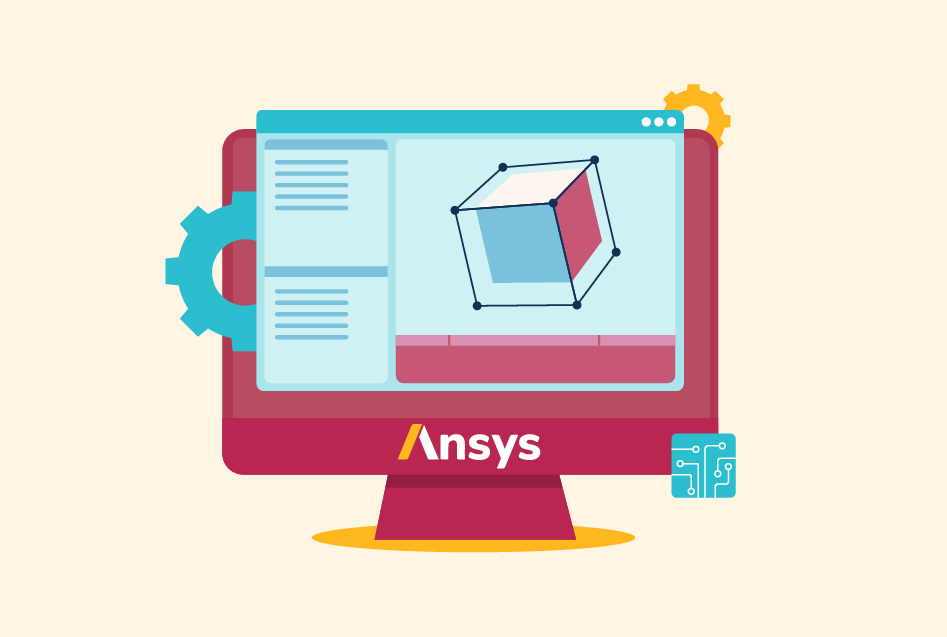Top SolidWorks Projects in 3D Design, Mechanical Design, & More
SolidWorks was introduced in 1995 by Dassault Systèmes. It is a crucial part of designing and architecture in manufacturing industries. Back in the days when SolidWorks was not introduced, designers and engineers used to rely on physical prototypes and 2D drawings.
SolidWorks comes in handy with producing and developing mechatronics systems from start to end. In this blog, we will learn about SolidWorks projects in 3D modeling, simulation projects, mechanical and automotive design, and more.
What is SolidWorks?
SolidWorks is a 3D modeling software based on CAD (Computer-Aided Design) and CAE (Computer-Aided Engineering). MIT graduate Jon Hirschtick developed it in the early 1990s. Later on, it was launched by Dassault Systemes. The SolidWorks software was widely used by designers and engineers worldwide, generating a massive revenue of about $483 million in 2011-12.
It became immensely popular and effective due to its use of parametric design. The parametric design allows the designer to see how the changes affect its adjoining elements or the whole design. This can be done by increasing or decreasing the size of one element that can affect a whole or an attached joint. It makes it positively easy to detect and rectify the problems in the overall design.
What are SolidWorks Projects?
SolidWorks based projects allow you to design 2D and 3D models using the SolidWorks software. They can combine control systems, robotics, and electronic computers. These projects are useful in defense, space projects, and large infrastructures and are used to develop a project design in any imaginable shape. They also help improve the overall design process.
Solidworks Projects with Dimension in 3D Modeling
3D modeling in SolidWorks helps speed up the process and provides a solution to the manufacturing design. The high accuracy offered by the 3D modeling application allows designers and engineers to reach the customized design requirements of the original project. It also helps with testing all aspects to bring out the best results with high efficiency.
Let’s look at an example of a 3D project model.
Designing and Simulation of a Quadcopter Using Solidworks
A quadcopter or a drone with four motors is an unmanned aerial vehicle (UAV) used for various purposes, including surveillance, aerial photography, etc.
- A quadcopter should have a proper size-to-weight ratio considering the power generated by motors of that particular size and weight.
- This process requires proper design and simulation before assembling the parts of a quadcopter. Here, SolidWorks 3D modeling comes into play by creating the designs and simulating them until you get the most efficient design.
- The quadcopter requires design tools like wires, arms, motors, etc.
- When finalizing the project, all the features are tested during the simulation.
Also Read: CATIA VS SolidWorks
SolidWorks Mechanical Projects
Some mechanical designs built with machines and vehicles require high efficiency and control as they are made to work in the most challenging conditions. These projects in mechanical design come in great use from management and planning to designing and creating software elements. You can learn more about these projects through this in-depth SolidWorks course.
Let’s look at an example of a mechanical design project.
Designing a 360-degree Drilling Machine
It is a machine with an arm that can drill at a customized speed and make rotations in all directions while drilling.
- It requires various tools that drilling machines need, such as a motor, drill bit, and a controlling system. The final step would be assembling them to form a working machine.
- A 3D working model must be created using SolidWorks before beginning the project. This 3D model will simulate the working of a drilling machine, testing the rotating arm’s movement and the arm’s stability during the drilling process.
- The designing simulations involve analyzing the stress and strain on the machine. The machine will experience stress and strain during the drilling process and the multiple types of material layers that a machine can drill through. These simulations help create the most efficient and robust machine design that will be implemented further in making the original machine.
SolidWorks Simulation Projects
Simulation is a replication of a real-world system in a controlled environment. It analyzes and studies the probability of things that can happen during the execution of the project. Numerous kinds of analysis help in designing these projects, such as thermal, optimization, and frequency. Simulation helps the designers and engineers detect potential threats to the real system and rectify these problems.
Let’s look at an example of a simulation project.
Simulation of Heat Transfer in an Electronics Enclosure Using SolidWorks
Heat transfer is the process that describes the flow of heat from one system to another. It can be applied in many ways, including conduction, convection, radiation, etc.
- Simulation of heat transfer in an electronic enclosure can help reduce cost, improve functionality, and decrease complexity.
- To protect the electronic component from overheating, simulations produced by SolidWorks, help in analyzing if the system gets overheated.
- If the system gets overheated, then designs like “geometry of the enclosure”, need to be changed.
- To improve heat efficiency, simulations of SolidWorks need to reduce the cost of maintaining the electronic components.
SolidWorks Projects in Automotive Design Projects
Automotive design projects involve designing the parts of an automobile, including the engine, body design, suspensions, gearbox, electronic components, wheels, axles, and transmission. SolidWorks is used in creating a virtual design of all the parts and assembling them into a 3D model. Let’s look at an example of an automotive design project.
Let’s look at an example of an automotive design project
The Design of a Formula One Racing Car
A formula one racing car is a single-seater with open wheels and an open cockpit designed for racing purposes. These kinds of racing cars need superior aerodynamics and power transmission. They also need a well-positioned powerful high torque engine. SolidWorks is widely used in the manufacturing of formula one cars by big automobile companies.
- A 3D model can be simulated in multiple situations by creating a high-performance design by SolidWorks.
- To improve the suspension and engine of the car, the simulations test the power and aerodynamic transmission of the car.
- Wind-tunnel testing techniques help models and projects in designing the fastest cars with the help of 3D models.
Simulation of Dual-Side Shaper Machine in Mechanical Design
A normal shaping machine is used for shaping the tools (horizontal, vertical, or inclined) to support their design. In comparison to this, a dual shaper machine helps shape the materials from both sides. The application of dual-shaping machines increases the rate of production in a minimal amount of time and is cost-effective.
Designing of a Dual Shaper Machine
- A quick return mechanism is used to create a dual-side shaper machine that shapes the material mounted on the vice from both sides by converting the motor’s rotary motion into the tool’s linear motion.
- In contrast to the crank and slider, the quick return mechanism converts rotary motion into reciprocating motion, but the forward reciprocating motion is slower than the return stroke.
- A chain and sprocket are used to connect the DC motor to the mechanism.
- A sturdy metal frame supports the entire mechanism.
Power Generating Speed Breakers
Every time a vehicle passes a set of speed breakers, a significant amount of energy is lost through friction. Using a vehicle’s weight and speed, electric power can be produced. The back-and-forth motion of the breaker is converted into rotational motion using a rack and pinion. Vehicles coming from both sides of the road can pass over a power-generating speed breaker.
Designing of Power-Generating Speed Breakers
- The system uses a mechanical assembly with plates that are pushed down using a spring assembly.
- The speed breaker press is used in the system.
- It generates energy by using a rack and pinion arrangement to press down and run the generator motor.
- The speed breaker is driven back into its original position by the spring mechanism, which transforms rotary motion into linear motion and vice-versa.
- The installation of the spring mechanism is economical, easy, and helps to generate electricity from road traffic.
Staircase Climbing Trolley
Manual trolleys are mainly used for goods transportation at construction sites, malls, warehouses, etc. These trolleys are easier to move on a flat and inclined surface but have a huge limitation of movement when it comes to moving them on a staircase.
This project proposes the design of a staircase climbing trolley that rules out all the limitations of manual trolleys. The smart design of such a type of trolley also enables it to move on rugged and inclined surfaces.
Designing of the Staircase Climbing Trolley
- The interlinked wheel arrangement supports the construction of the trolley.
- A trolley with support wheels is used in the mechanism. It will be supported when at rest and suspended in the air while being lifted to move.
- Three independently rotating wheels are joined by a connecting rod to form the interlinked wheel mechanism.
- Each wheel has three shafts that connect to a main rod. This main rod is attached to the three rods through a free-moving bearing mechanism.
- This free-moving bearing mechanism enables effective stair-climbing functionality for goods transportation.
Kinetic Energy Recovery System Using a Flywheel in Bicycle
A flywheel is used to store the kinetic energy generated by the application of brakes. This saved energy is used to propel the bicycle forward. This project is constructed using a kinetic energy recovery system to design the flywheel and recover the moving energy of the bicycle.
Working of a Kinetic Energy Recovery System Using a Flywheel in a Bicycle
- This project is based on a regenerative braking system.
- While riding a bicycle and braking, a lot of the kinetic energy from pedaling gets lost. This energy can be used up with the help of a flywheel when applying a brake.
- The saved energy from the flywheel provides a helpful boost when starting to pedal again.
- The rider can charge the flywheel while descending a hill and boost the bicycle when accelerating.
Simulation of Pneumatic Power Steering System
Pneumatic machinery refers to machines and tools that use air pressure to perform tasks. Power steering systems have helped reduce driver fatigue and make driving more comfortable. These systems use fluid pressure to assist the driver in turning the front wheels.
The pneumatic power steering system makes driving the vehicle much easier than driving a vehicle that currently uses fluid power. These vehicles are also very easy to maintain.
Working of Pneumatic Machine Using Power Steering Systems
- This entire system consists of a pneumatic actuator, two wheels, and a power steering linkage mounted on the frame.
- This type of machine transmits compressed air at high pressure to a pneumatic actuator.
- The control valves directly control the air and distribute it through the pipes.
- The shaft of the pneumatic actuator is connected to one of the wheels, and the other wheel is attached via the linkage mount.
- The direction control lever controls the stroke of the pneumatic cylinder and activates steering.
360-Degree Rotating Vehicle
A 360-degree rotating vehicle is capable of moving in all directions. Such a rotating vehicle design overcomes the wheel-rotation hindrances faced by normal vehicles while taking a U-turn, parking a vehicle in a congested area, etc. All comforts in terms of the swift movement of wheels to move or rotate a car in any direction are time-saving.
Carrying heavy cargo, emergency vehicles, and other items is made easy with rotating vehicles. This type of rotating vehicle can take a turn without moving. It requires no additional space. Each of the four wheels in this system is powered by DC motors, and the RF remote controls the 360-degree rotating wheel.
Conclusion
SolidWorks is a 3D modeling software used to design, generate, and edit complex models. It has been used by numerous industries such as aerospace, automotive, and mechanical to create various SolidWorks projects. Engineers and designers too have been using them for a decade to improve their overall design structures.






